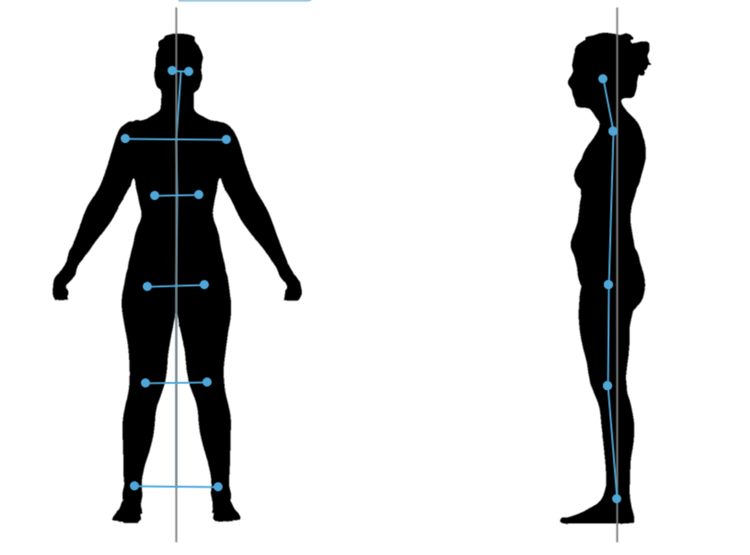Body Shape Rating (BSR)
Fit3D extracted SBSI, ABSI, Trunk to Leg Volume Ratio, body fat percentage, and BMI from more than 26,000 scans. Fit3D then evaluated the correlation between each algorithm and calculated the weighted values for the health risk outcomes based on the overall Fit3D user population. This results in a Body Shape Rating (BSR). A user can then understand how their body shape wellness compares with the rest of the Fit3D population.
Ways to Improve: The primary way to improve your BSR is to increase the density of your body, build the muscle in your legs, and decrease your waist circumference. This can be done through a balanced mix of good nutrition and exercise. Consult with your trainer, nutritionist, coaches, or doctors to set up a plan.
Waist Circumference
A larger waist circumference can mean more "deep" (visceral) fat which is an unhealthy type of fat that wraps around internal organs and can lead to additional health risks. Generally a lower waist circumference is better. Waist circumference has been widely used in the past due to its simplicity.
Waist circumference (WC) provides a prediction of risk independent of BMI. WC is particularly useful for patients who are categorized as normal or overweight on the BMI scale as a measurement associated with visceral fat and overall body shape.
Ways to Improve: You can decrease your body fat percentage through a balanced mix of good nutrition and exercise that includes higher intensity interval training and cardio. Consult with your trainer, nutritionist, coaches, and/or doctors to set up a plan.
Waist to Hip Ratio
Waist to hip ratio describes body shape using a ratio between waist and hips. A lower ratio generally means lower risk for certain health issues. If you have heard of body shapes described as apple or pear, these are two ends of the WHR spectrum where pear has a lower WHR ratio and therefore lower risk for certain health issues.
The waist to hip (WHR) ratio is obtained from dividing the circumference of the waist (the narrowest point between the hips and ribs) by the circumference of the hips (the widest part of the hips).
WHR is a ratio generally used to evaluate whether the individual is at high risk of obesity, diabetes, coronary heart disease, and/or high blood pressure. The measurement evaluates body shape in the midsection of the body.
This ratio as a health metric is extremely limited, but it is an easy way to try to evaluate the level of visceral fat one may have.
Ways to Improve: While you cannot spot reduced fat mass throughout your body, you can still work with your coaches to reduce the amount throughout your body, which will generally decrease the circumference of your mid-section. WHR is extremely limited in scope, but is widely used as a metric of health.
Trunk to Leg Ratio
Trunk to Leg Volume Ratio compares the volume of your trunk with the volume of your legs. This can generally only be done with some type of body scanning, whether it be Fit3D or more costly and complex scanners like DXA or MRI. Research claims that having a high percentage of your body’s volume in your torso compared to your legs increases the likelihood of you experiencing prediabetes, diabetes, high triglyceride (fat) counts, high blood pressure, metabolic syndromes, and other severe health complications.
Weight in your mid-section is highly correlated with visceral fat, which is the unhealthy fat around your organs. If you have a big belly and smaller legs, it is a good assumption that your weight is centered around your midsection and is therefore visceral fat.
Ways to Improve: This formula is dependent on volume, not weight. The overly simple way to improve your Trunk to Leg Volume score is to decrease the volume of your midsection and increase the volume of your legs. This can be done through a balanced mix of good nutrition and exercise that includes higher intensity interval training. Consult with your trainer, nutritionist, coaches, and/or doctors to set up a plan







